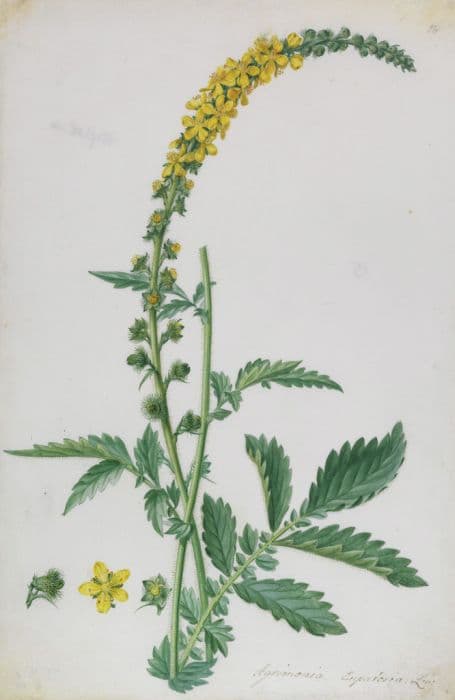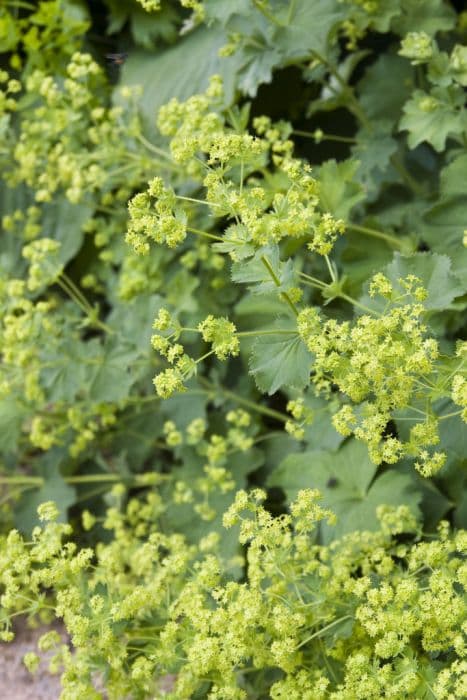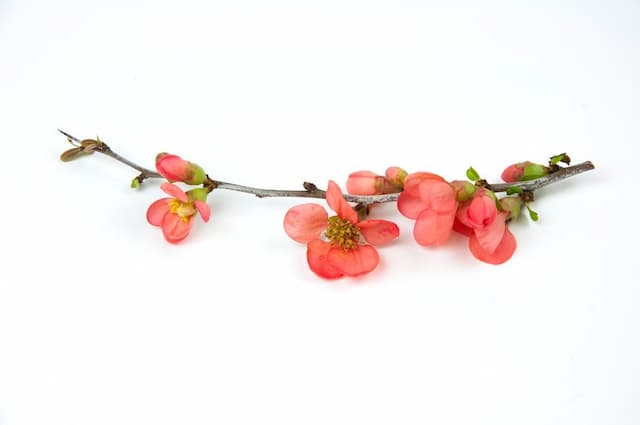Nanking Cherry Prunus tomentosa

ABOUT
Prunus tomentosa, commonly known as Nanking cherry, is a deciduous shrub notable for its showy spring flowers and edible fruit. It has a dense, spreading growth habit with slender, reddish-brown branches that become gray with age. In early spring, the plant comes alive with small, fragrant, white or pale pink flowers that bloom in clusters along the branches before the leaves emerge. The leaves are green, simple, and oval to oblong, with serrated margins and a somewhat downy texture beneath, giving a soft appearance. In the fall, the foliage can turn shades of yellow or red, adding seasonal interest. Following the blooms, the Nanking cherry produces small, bright red to deep red cherries during the summer. These fruits are round, juicy, and are enjoyed by birds and humans alike. Though the plant's size is not to be noted, the fruit clusters can give a visually impactful display, contributing to the ornamental value of the shrub. The Nanking cherry's bark and twigs may also attract visual interest, especially in the winter when the leaves have dropped, revealing a more rugged texture against the backdrop of a wintery landscape. Overall, the Nanking cherry is a versatile and attractive plant that is valued both for its beauty and its hardy nature.
About this plant
 Names
NamesFamily
Rosaceae.
Synonyms
Nanking Cherry, Manchu Cherry, Downy Cherry, Ando Cherry, Mountain Cherry, Chinese Bush Cherry, Korean Cherry, Hanami Cherry.
Common names
Cerasus tomentosa, Amygdalus tomentosa, Padus tomentosa, Prunus armeniaca var. tomentosa, Prunus mongolica, Prunus tomentosa var. grandiflora.
 Toxicity
ToxicityTo humans
Prunus tomentosa, commonly known as the Nanking cherry, is not typically considered poisonous to humans. However, like other members of the Prunus genus, it contains compounds that can potentially be toxic. The seeds, leaves, and stems of the Nanking cherry, like those of other stone fruits, contain cyanogenic glycosides, which can convert to hydrogen cyanide if ingested in large enough quantities. This means that while the fruit's flesh is edible, care should be taken to avoid consuming the pits, leaves, or stems. Symptoms of cyanide poisoning can include headache, nausea, vomiting, abdominal pains, dizziness, weakness, and in extreme cases, respiratory failure and death. However, accidental poisoning from Prunus seeds is rare, as a substantial amount would typically have to be ingested for symptoms to occur.
To pets
Prunus tomentosa, known as the Nanking cherry to pets, also contains cyanogenic glycosides in its seeds, leaves, and stems, which can release hydrogen cyanide when metabolized. While pets are less likely to consume large amounts of plant material, ingestion of these parts of the plant can potentially lead to cyanide poisoning. Symptoms in pets can include dilated pupils, difficulty breathing, panting, and shock. In more severe cases, ingestion can lead to lethargy, collapse, convulsions, coma, and even death. As with humans, toxicity is more likely with the ingestion of substantial amounts of the plant material. Therefore, pet owners should prevent pets from chewing on the stems, leaves, or seeds of the Nanking cherry to avoid the risk of poisoning.
 Characteristics
CharacteristicsLife cycle
Perennials
Foliage type
Deciduous
Color of leaves
Green
Flower color
White
Height
6-10 feet (1.8-3 meters)
Spread
4-6 feet (1.2-1.8 meters)
Plant type
Shrub
Hardiness zones
3-7
Native area
East Asia
Benefits
 General Benefits
General Benefits- Ornamental Value: Prunus tomentosa, commonly known as Nanking cherry, features attractive spring blossoms that enhance the aesthetics of gardens and landscapes.
- Edible Fruit: Nanking cherry produces small, edible fruits that are enjoyed fresh, in preserves, or as ingredients in various dishes and desserts.
- Wildlife Habitat: The fruit of the Nanking cherry serves as a food source for birds and other wildlife, supporting biodiversity.
- Drought Tolerance: Once established, Nanking cherry is known for its drought tolerance, making it suitable for xeriscaping and low-water-use gardens.
- Windbreaks and Hedges: Due to its dense growth habit, Nanking cherry is often used for creating windbreaks and hedges, providing privacy and reducing wind speed.
- Erosion Control: The extensive root system of Nanking cherry helps stabilize the soil, making it useful for controlling erosion on slopes and banks.
- Cold Hardy: Nanking cherry is cold-hardy, capable of withstanding harsh winter conditions, which makes it suitable for cooler climates.
- Pollinator Friendly: The blossoms of Nanking cherry attract pollinators such as bees, which are essential for the pollination of many plants and crops.
 Medical Properties
Medical Properties- Anti-inflammatory: Prunus tomentosa extracts may have properties that reduce inflammation.
- Antioxidant: The fruit is known to contain antioxidants which are beneficial for preventing oxidative stress.
- Anti-cancer: There are indications that certain compounds in the fruit might have anti-cancer properties.
- Immune system support: Consuming this plant could potentially enhance the immune system.
- Diabetes management: Some studies suggest that the plant may have a role in managing blood sugar levels.
 Air-purifying Qualities
Air-purifying QualitiesThis plant is not specifically known for air purifying qualities.
 Other Uses
Other Uses- Prunus tomentosa, commonly known as the Nanking cherry, can be used in landscaping as a decorative hedge owing to its dense growth and attractive spring blossoms.
- The fruits of Nanking cherry act as a food source for wildlife, particularly birds, who enjoy the small red cherries.
- Nanking cherry wood, being hard and dense, can be used for crafting small wooden objects or for woodturning projects.
- In bonsai, the Nanking cherry is appreciated for its attractive bark, blossoms, and miniature fruit, which can create appealing miniature tree specimens.
- Due to the plant's ability to spread and form thickets, the Nanking cherry is sometimes used for erosion control on slopes and banks.
- The flowers can be used in cut flower arrangements, adding a burst of color and fragrance to indoor settings, especially in the spring.
- Nanking cherry can be utilized as part of a mixed wildlife hedgerow, providing shelter and nesting sites for various bird species.
- Some cultures prepare traditional fermented beverages using the fruit of the Nanking cherry plant, making use of its natural sugars and yeasts.
- The plant's dense foliage and thorns can provide a natural barrier against trespassers when planted around property boundaries.
- During historical times, the bark and leaves were sometimes used for tanning leather, owing to the presence of tannins in the plant material.
Interesting Facts
 Feng Shui
Feng ShuiThe Nanking cherry is not used in Feng Shui practice.
 Zodiac Sign Compitability
Zodiac Sign CompitabilityThe Nanking cherry is not used in astrology practice.
 Plant Symbolism
Plant Symbolism- Renewal: Prunus tomentosa, also known as the Nanking cherry, blooms in early spring, symbolizing the idea of new beginnings and the renewal of nature after winter.
- Protection: The Nanking cherry has been used historically to create hedges or protective barriers, which can symbolize safety and defense.
- Beauty and Purity: With its delicate white to pale pink flowers, the Nanking cherry represents beauty and purity, reflecting the aesthetically pleasing appearance and the innocent, clean image of the blossoms.
- Fragility of Life: Like many cherry trees, the blossoms of the Nanking cherry are short-lived, which is often seen as a reminder of the transient nature of life and the preciousness of each moment.
 Water
WaterThe Nanking Cherry, or Prunus tomentosa, should be watered deeply to encourage a strong root system, particularly during the first growing season to establish the plant. After establishment, it generally requires less frequent waterings. A good rule of thumb is to water the Nanking Cherry about once a week, providing about 1 to 1.5 gallons of water each time, but this can vary depending on climate and soil conditions. During hot, dry periods, the watering frequency may need to be increased to prevent stress. Always check the soil moisture before watering; the soil should be moist but not waterlogged.
 Light
LightThe Nanking Cherry thrives best in full sun where it can receive at least 6 hours of direct sunlight daily. It is important to plant it in a spot that is not shaded by other larger plants or structures to ensure it gets enough light for healthy growth and fruit production. Partial shade can be tolerated, but full sun is optimal for maximum flowering and fruiting.
 Temperature
TemperatureThe Nanking Cherry can survive in a broad range of temperatures but prefers a temperate climate. It is cold-hardy and can tolerate temperature lows down to -20°F, making it suitable for USDA zones 2 through 7. The ideal temperature range for the Nanking Cherry during the growing season is between 60°F and 75°F. Extreme heat above 95°F might cause stress to the plant, so some shade during the hottest part of the day could be beneficial in very warm climates.
 Pruning
PruningPruning the Nanking Cherry is essential to remove dead or damaged branches, encourage a strong structure, and promote vigorous growth. Pruning should be done in late winter or early spring before the new growth starts. Thin out old branches to allow light into the center of the plant, and remove any crossing branches to prevent damage. It is recommended to prune once a year to maintain the desired shape and improve air circulation, which helps prevent disease.
 Cleaning
CleaningAs needed
 Soil
SoilNanking cherry prefers a well-drained soil with a mix of loam, sand, and organic compost. The ideal soil pH should range between 6.0 and 7.5. A balanced N-P-K fertilizer can be applied yearly for optimal growth.
 Repotting
RepottingNanking cherry trees should be repotted every 2-3 years, or as needed when they become root-bound. Ensure to increase the pot size to accommodate growth.
 Humidity & Misting
Humidity & MistingNanking cherry thrives in moderate humidity levels, typical of outdoor environments. Indoor humidity should replicate this, avoiding extremely dry or moist conditions.
 Suitable locations
Suitable locationsIndoor
Ensure bright light, adequate watering, and moderate humidity for Nanking cherry.
Outdoor
Plant in full sun, provide space for growth, and protect from extreme weather.
Hardiness zone
3-7 USDA
 Life cycle
Life cyclePrunus tomentosa, commonly known as Nanking cherry, starts its life cycle with seed germination, typically in spring when soil temperatures rise. Following germination, seedlings grow and develop into juvenile plants, establishing a root system and foliage. The plant enters a vegetative stage, where it focuses on growth and producing a dense, branching structure. After 2 to 4 years, the Nanking cherry reaches maturity and begins its reproductive phase, blossoming with small white to pink flowers that are pollinated by insects, leading to the development of small red cherries. These fruits contain seeds that, once dispersed by animals or gravity, can give rise to new plants, thereby continuing the life cycle. As a perennial, the Nanking cherry plant can bear fruit for several years before gradually declining and eventually dying after completing its lifespan.
 Propogation
PropogationPropogation time
Spring to Early Summer
Propogation: The Nanking cherry (Prunus tomentosa) is most commonly propagated through seeds or by softwood cuttings. The ideal time for seed propagation is in the fall, directly after harvest, which allows them to naturally stratify during the winter. However, to increase sprouting success, seeds can be stratified artificially by mixing them with moist sand and storing them at a temperature of 33 to 41 degrees Fahrenheit (0.5-5 degrees Celsius) for about 90 to 120 days. Softwood cuttings are typically taken in late spring or early summer when new growth is still soft and pliable. These cuttings should be about 4 to 6 inches (10-15 centimeters) long and are dipped in a rooting hormone before being placed in a well-draining potting mix. The cuttings are then kept in a high-humidity environment until roots develop, which usually takes several weeks.









